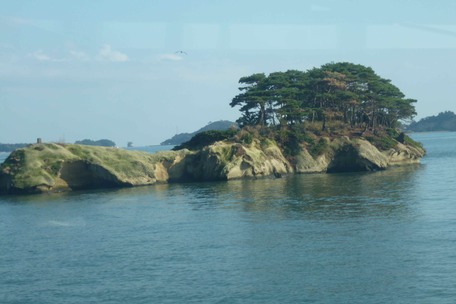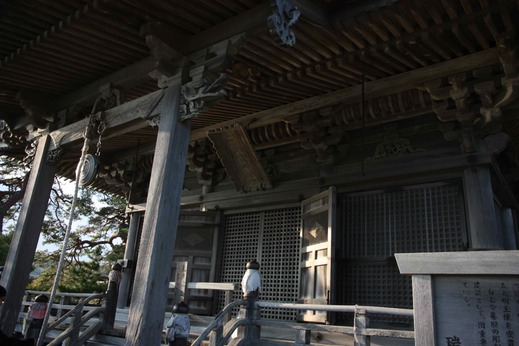From there we set off in search of the cruise terminal, wandering through a park along the way, and arriving just in time to be hustled onto an earlier cruise, which turned out to be rather handy from a post-cruise perspective.
The bay and group of 260 pine-clad islands and islets half an hour outside Sendai known as Matsushima (Matsu = pines, shima = islands) is ranked as one of the Three Views of Japan alongside Miyajima and Amanohashidate.

There’s an apocryphal haiku often attributed to Bashō that supposedly suggests the great poet was at a loss for words when he visited the place, stopping off on his way to or from the Deep North:
Matsushima ah!
A-ah, Matsushima, ah!
Matsushima, ah!
But he would surely have been able to come up with something better.
There are a number of companies operating sightseeing cruises, most of them based at Matsushima Pier, a five minute walk (ten if you take your time) from Matsushima Kaigan Station with others operating from Shiogama Pier, a short walk from Hon-Shiogama Station, three stations ahead of Matsushima Kaigan on the JR Senseki Line.
We’d opted for the all-Matsushima experience, though if you’ve got tome on your hands it may pay to shop around. When you’ve got a couple of hours in the afternoon your choices are relatively limited. Of the hour on the water, there's not much that needs to be said, apart from invoking the one picture = a thousand words principle, noting that the water resembled a mill pond, the oyster beds were obvious and it was a very pleasant way to spend an hour.

Back on dry land, we were inclined to head to Godaido, a small temple hall on an islet right next door to the pier. It mightn't be the most historically significant or architecturally impressive temple going around, but the site does date back to 807 and it was founded by the same priest who founded nearby Zuiganji. The present structure on the site is a 1604 reconstruction paid for by local feudal lord Date Masamune, decorated by carvings of the twelve animals of the lunar calendar, three on each side and its prominent location means it has become one of the key symbols of Matsushima.